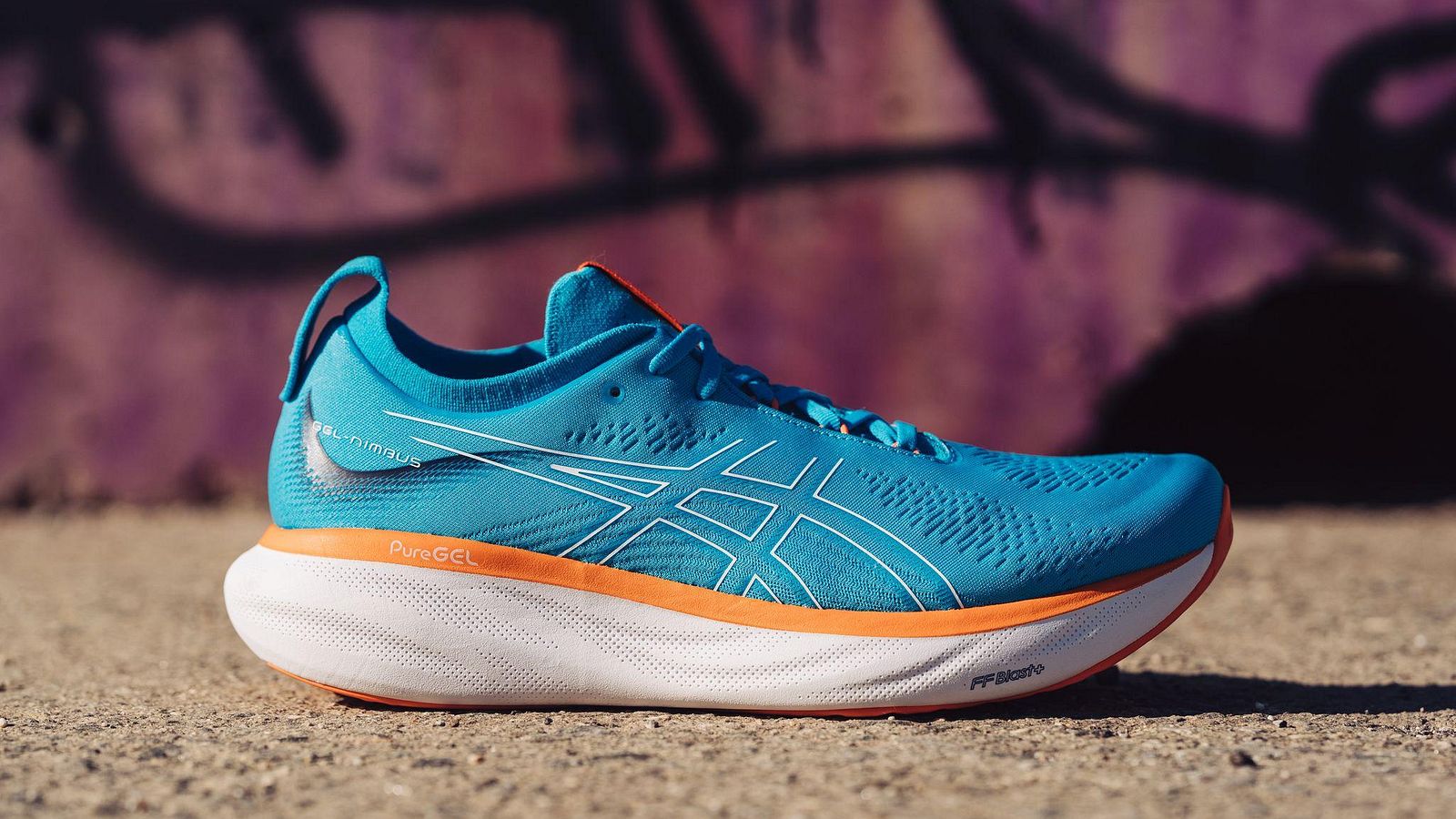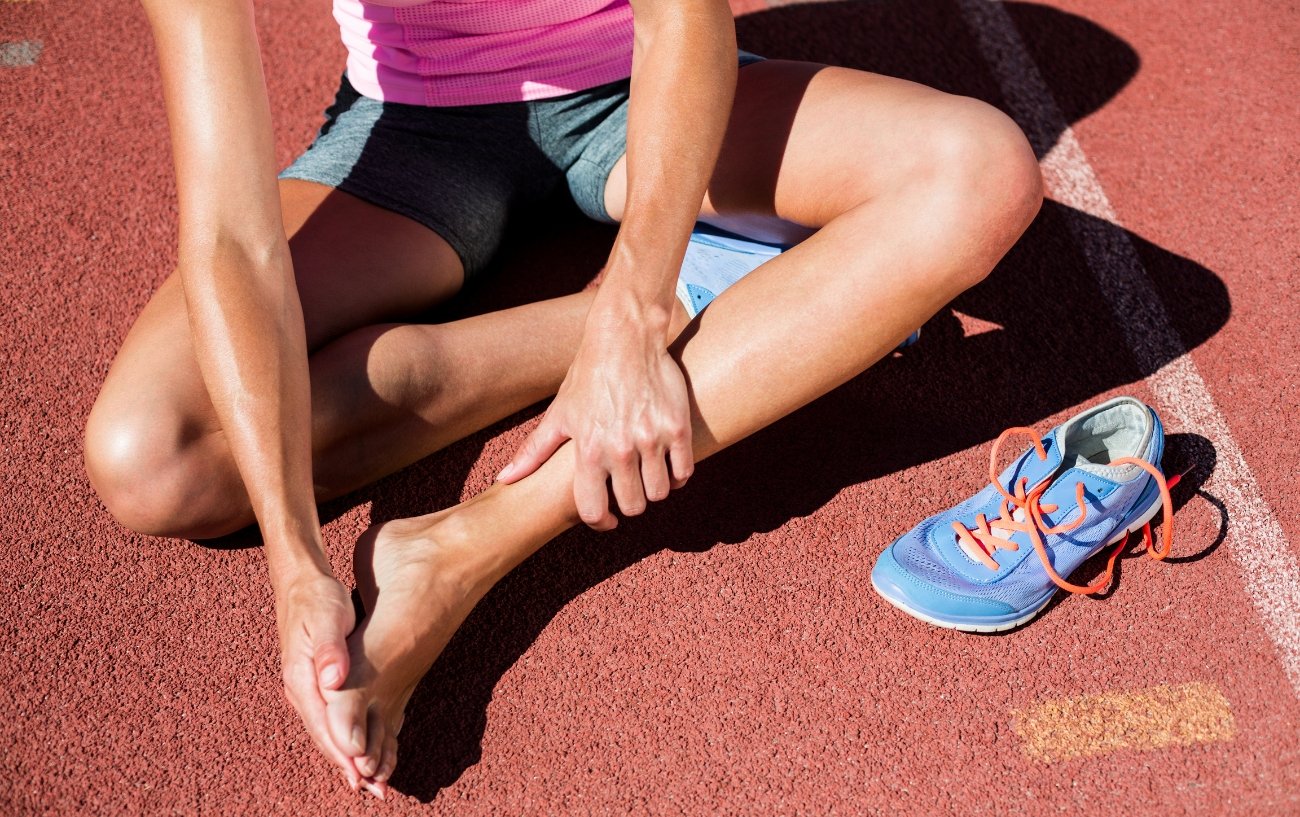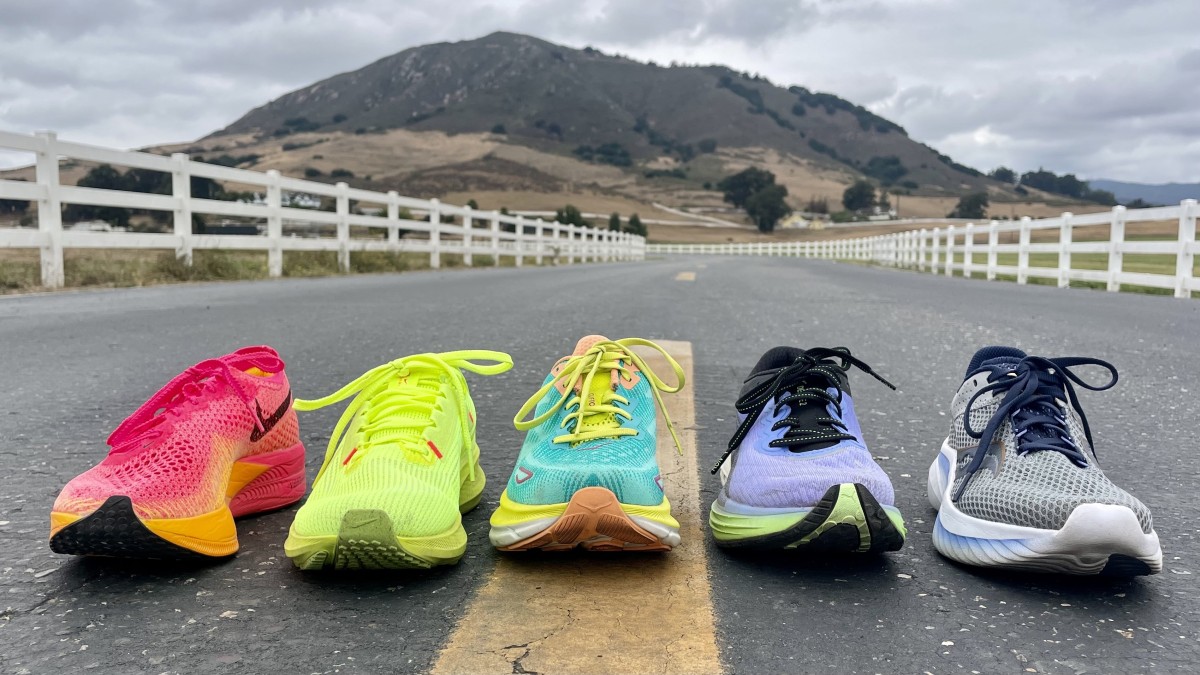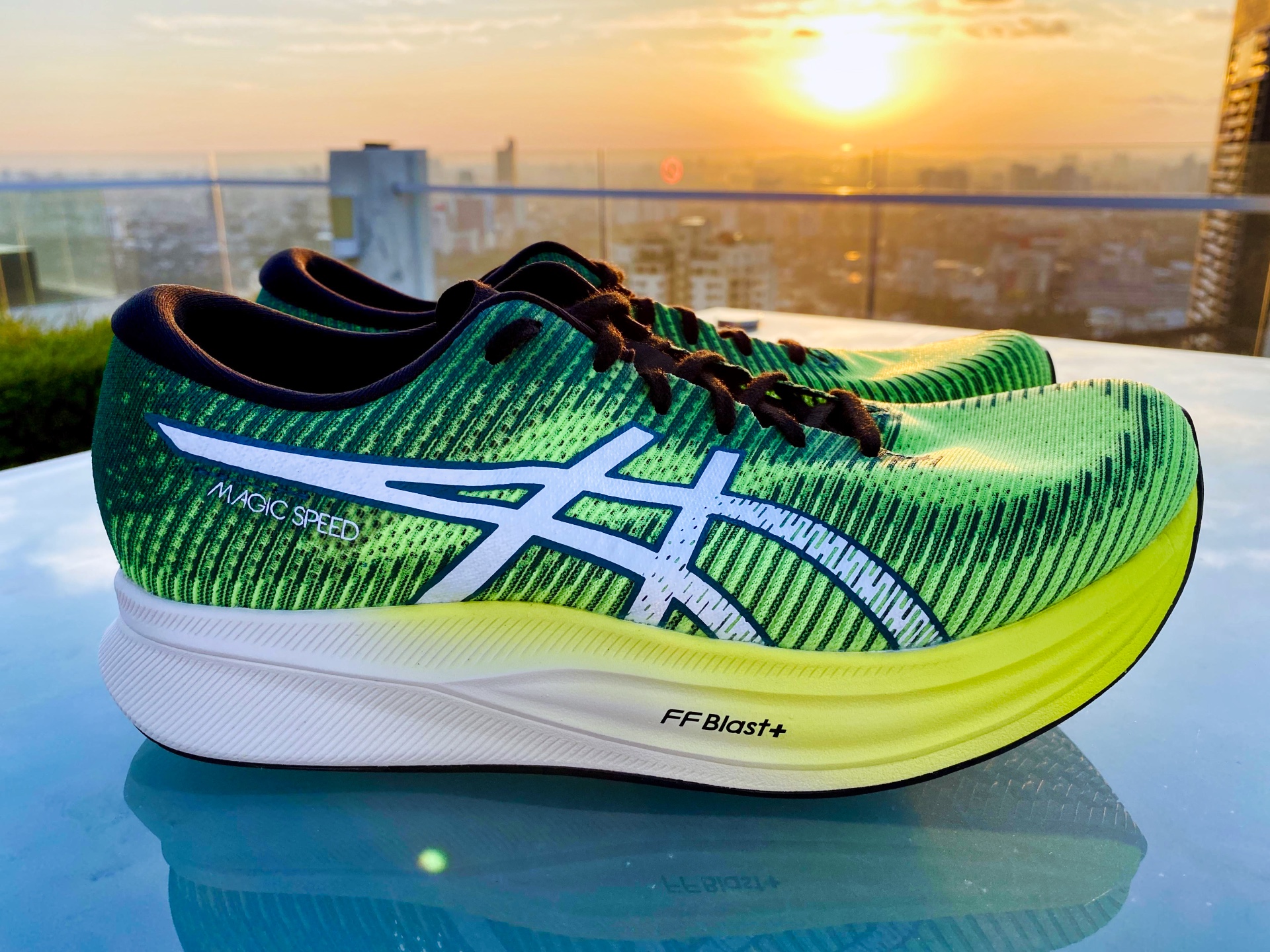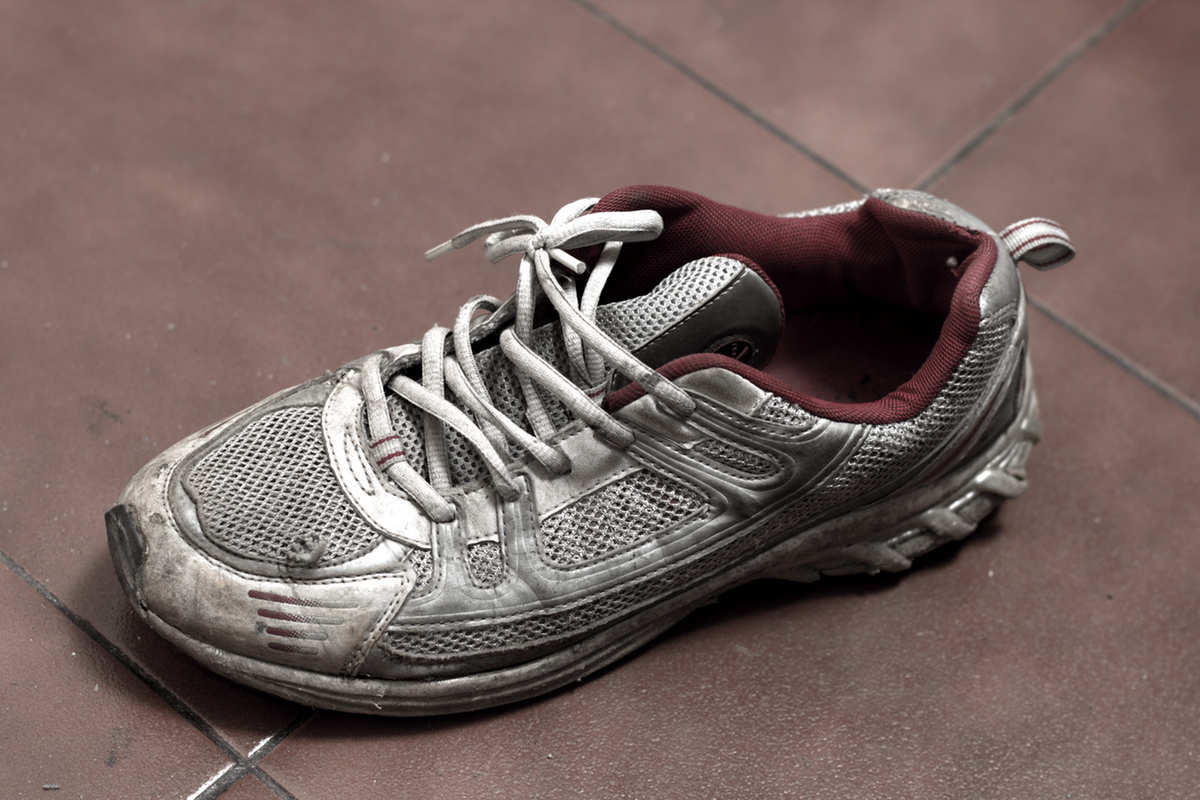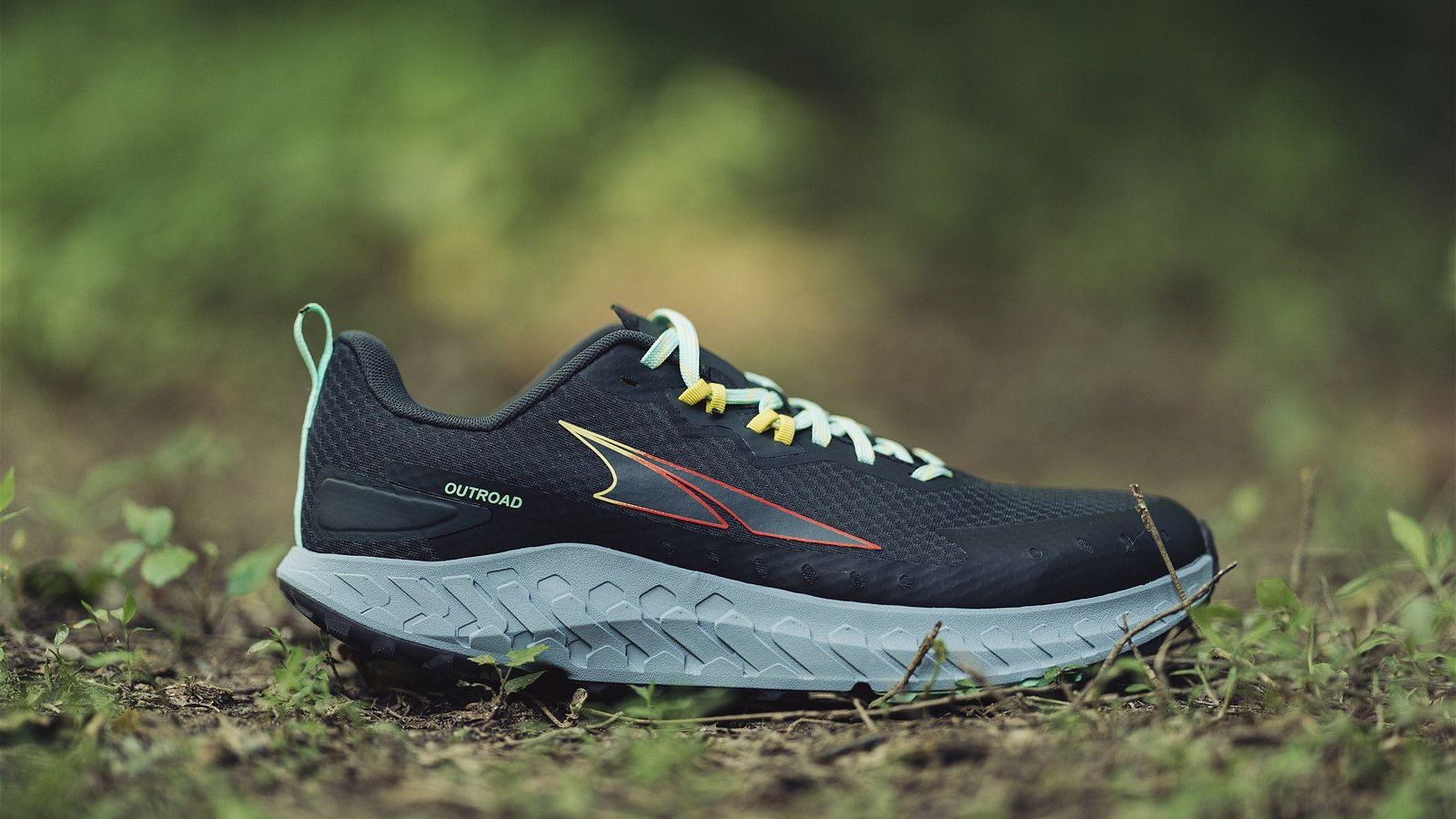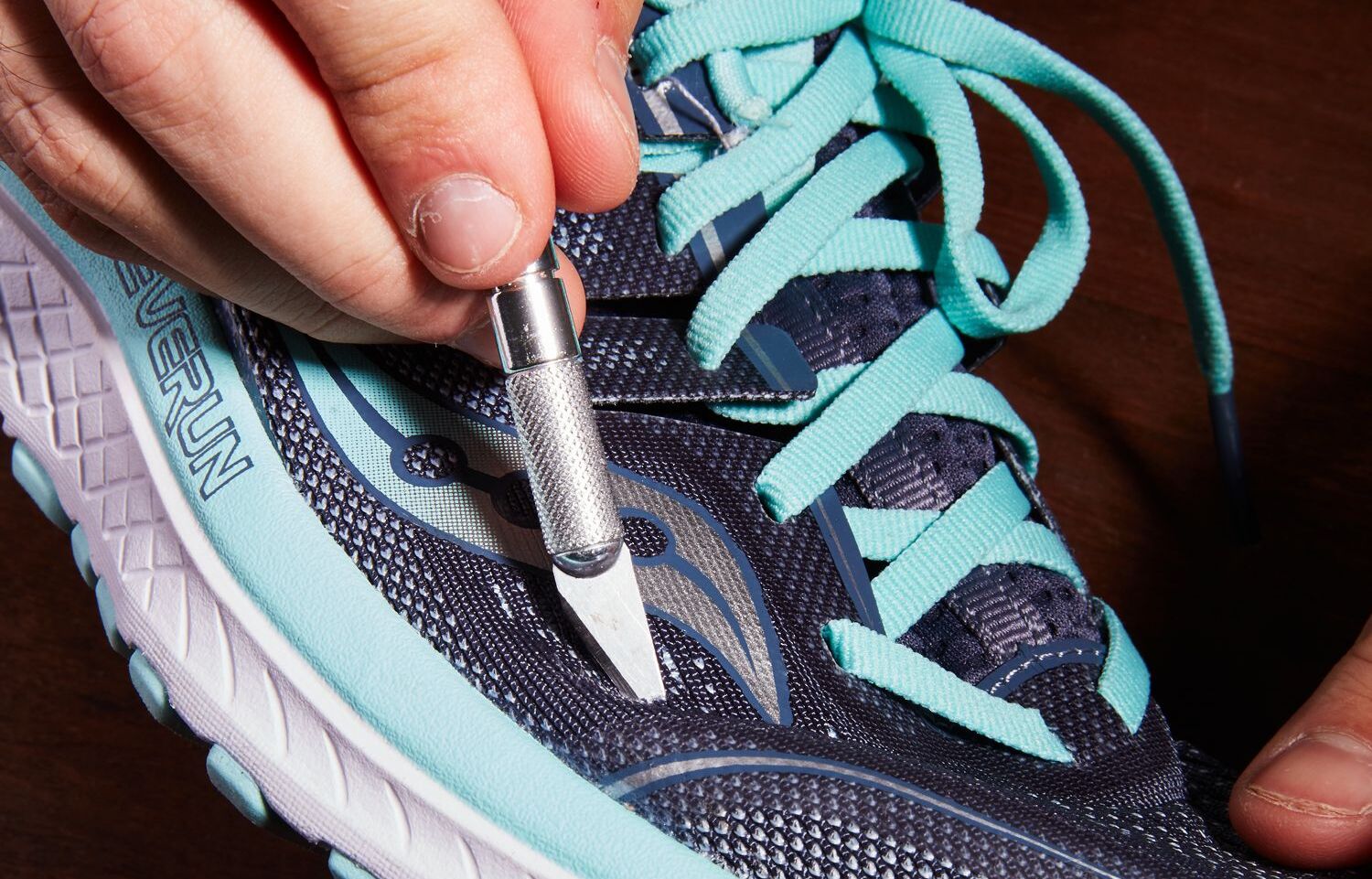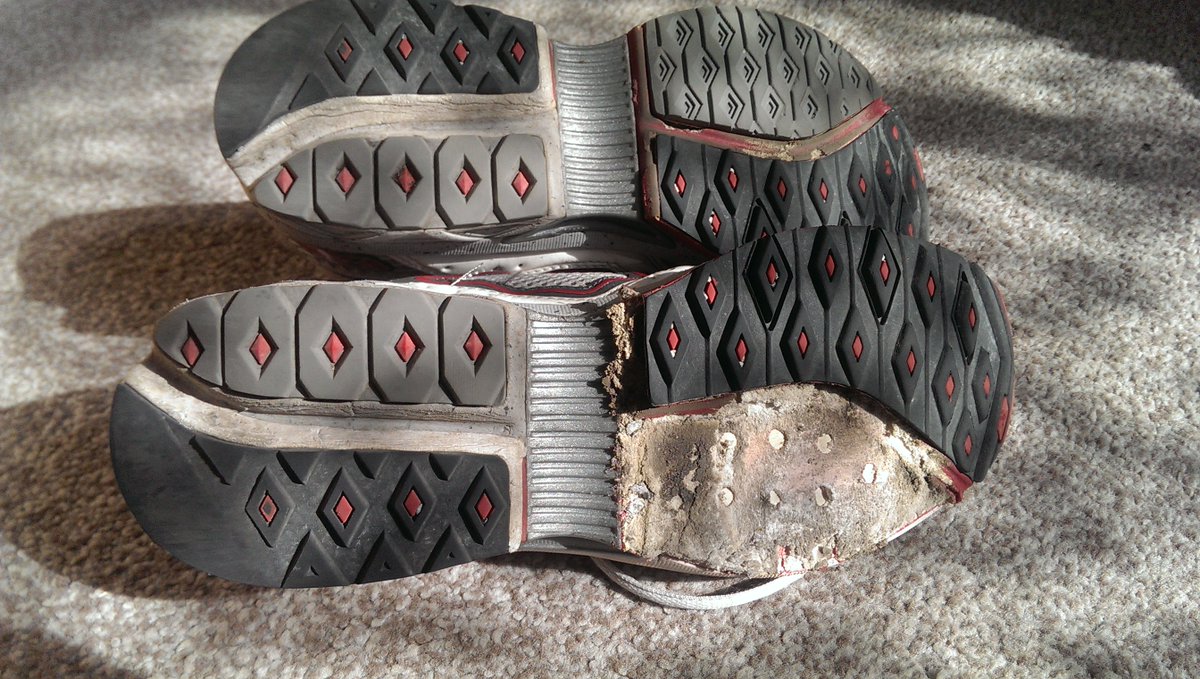

Featured
When To Replace A Running Shoes
Modified: January 2, 2024
Find out when is the perfect time to replace your running shoes. Get featured tips on how to determine if your running shoes need to be replaced.
Introduction
When it comes to running, having the right pair of shoes is essential for comfort, support, and injury prevention. Over time, even the best running shoes will start to show signs of wear and tear. As a runner, it’s important to know when it’s time to replace your running shoes to prevent potential injuries and maintain optimal performance.
Running shoes are designed to absorb impact and provide cushioning and support to your feet and legs. However, the materials and technologies that make them so effective can only withstand a certain amount of use before they start to break down. This is why knowing when to replace your running shoes is crucial to ensure that you continue to enjoy a comfortable and injury-free running experience.
In this article, we will discuss the signs of wear and tear that indicate it’s time to replace your running shoes, as well as tips for extending their lifespan. By understanding these indicators and taking proper care of your running shoes, you can make the most out of your investment and stay on top of your running game.
Signs of Wear and Tear
As you use your running shoes, they will inevitably experience wear and tear. It’s important to be aware of the signs that indicate your shoes are no longer providing the necessary support and protection. Here are some common signs to look out for:
- Decreased Cushioning and Support: One of the most obvious signs that your running shoes need to be replaced is when you start to feel a significant decrease in cushioning and support. If you notice that your feet are feeling more fatigued after a run or you’re experiencing increased discomfort, it’s likely time for new shoes.
- Worn Out Traction: The outsole of your running shoes provides the necessary grip and traction to keep you stable while running. As the shoes age, the traction pattern will start to wear down. If you find that your shoes are slipping on wet surfaces or if the treads have become flat, it’s a clear indication that it’s time to replace them.
- Visible Damage and Tears: Physical damage to your running shoes, such as visible tears, holes, or separation of the sole from the upper, is a clear sign that they need to be replaced. These damages can compromise the structural integrity and support of the shoes, increasing the risk of injury while running.
- Persistent Pain or Discomfort: If you’ve been experiencing persistent pain or discomfort in your feet, ankles, knees, or hips while running, it could be a sign that your shoes are no longer providing the necessary support and cushioning. It’s important to address any pain or discomfort promptly to avoid further injury.
By paying attention to these signs of wear and tear, you can ensure that your running shoes are in good condition and provide the support and protection your feet need.
Decreased Cushioning and Support
One of the most important aspects of running shoes is their ability to provide cushioning and support to your feet and legs. Over time, however, the materials that provide this cushioning can start to break down, resulting in decreased cushioning and support. This can be a major sign that it’s time to replace your running shoes.
When the cushioning in your shoes starts to wear out, you may notice that your feet feel more fatigued after a run. The impact from each step can become more jarring and uncomfortable, leading to increased muscle soreness and potential stress on your joints. Your shoes may also feel less responsive, reducing your ability to perform at your best.
In addition to decreased cushioning, the overall support provided by your shoes may also diminish over time. The midsole, which is responsible for stability and shock absorption, can lose its shape and integrity, resulting in reduced support for your arches and ankles. This can lead to an increased risk of injuries such as plantar fasciitis, shin splints, and ankle sprains.
To determine if your shoes have lost their cushioning and support, pay attention to how they feel during and after your runs. If you notice a significant decline in comfort and support, it’s time to start considering a replacement. You can also perform a simple visual inspection of the midsole. If it appears compressed, flattened, or shows visible signs of wear, it’s a clear indication that it’s time for new shoes.
Remember, running shoes are meant to provide optimal cushioning and support for a specific duration. The exact lifespan will vary depending on factors such as your body weight, running style, and the surface you typically run on. However, a general guideline is to replace your running shoes every 300 to 500 miles, or every six months to a year for regular runners.
By recognizing the signs of decreased cushioning and support in your running shoes, you can ensure that you’re running in shoes that provide the necessary protection and help you perform at your best.
Worn Out Traction
The traction of your running shoes is crucial for providing stability and grip while running. The outsole of your shoes is designed with a specific tread pattern that helps prevent slips and falls, especially on wet or slippery surfaces. However, over time, the traction of your shoes can wear out, compromising your safety and performance.
One of the signs that your running shoes have worn out traction is if you notice a decrease in grip and stability. If you find yourself slipping or sliding more frequently, particularly on wet or uneven surfaces, it’s a clear indication that the outsole is no longer providing the necessary traction.
Another way to determine if the traction of your shoes is worn out is to inspect the tread pattern. The deeper the grooves and tread, the better the traction. If these grooves have become shallow or flat, it means that the outsole has lost its grip and it’s time for a replacement.
Worn-out traction is not just a matter of convenience; it can also lead to an increased risk of injuries. Without proper grip, you may lose your footing while running, which can result in slips, falls, and potential sprains or fractures. It’s essential to prioritize your safety by replacing your running shoes when the traction is no longer effective.
It’s important to note that the rate at which the traction wears out depends on various factors, including the type of surface you typically run on, your running style, and the overall quality of the shoes. However, as a general guideline, it’s recommended to replace your running shoes every 300 to 500 miles or every six months to a year, depending on your level of usage.
By being proactive and recognizing the signs of worn-out traction, you can ensure that your running shoes continue to provide the necessary grip and stability for a safer and more enjoyable running experience.
Visible Damage and Tears
Physical damage to your running shoes is a clear indication that it’s time for a replacement. Whether it’s visible tears, holes, or separation between the sole and the upper, these damages can have a significant impact on the overall performance and safety of your shoes.
When your running shoes show signs of visible damage, it’s a clear indication that the structural integrity has been compromised. Tears and holes in the upper material can lead to a lack of support and stability, increasing the risk of injury. Additionally, when the sole starts to detach or separate from the upper, it can cause discomfort and affect the overall performance of the shoe.
Water damage is another type of visible damage that can occur. If you frequently run in wet conditions or your shoes have been exposed to water, they may become saturated, causing the materials to weaken and deteriorate. This can lead to a loss of support, cushioning, and overall effectiveness.
Inspect your running shoes regularly for any signs of visible damage. If you notice tears, holes, or any other type of physical damage, it’s best to replace them as soon as possible. Continuing to use damaged shoes can put unnecessary strain on your feet and increase the risk of injuries.
It’s worth mentioning that the lifespan of running shoes can vary depending on factors such as the quality of materials used, the frequency of use, and the intensity of your runs. However, as a general guideline, it’s recommended to replace your running shoes every 300 to 500 miles or every six months to a year.
By being aware of visible damage and tears in your running shoes, you can ensure that you’re running in footwear that is safe, supportive, and capable of providing the necessary protection for your feet and legs.
Persistent Pain or Discomfort
Running should be an enjoyable and pain-free experience. However, if you’ve been experiencing persistent pain or discomfort in your feet, ankles, knees, or hips while running, it may be a sign that your shoes are no longer providing the necessary support and cushioning.
Running shoes are designed to absorb shock and provide cushioning to reduce the impact on your joints and muscles. As they start to wear out, the ability of the shoes to effectively absorb shock diminishes, leading to increased stress on your body. This can result in various forms of pain, including arch pain, shin splints, knee pain, and even lower back pain.
If you’re consistently experiencing pain or discomfort that doesn’t subside with rest or proper recovery, it’s time to evaluate your running shoes. Over time, the materials that provide cushioning and support can break down, causing them to lose their effectiveness. Continued use of worn-out shoes can exacerbate existing injuries or lead to new ones.
When assessing your shoes, also consider whether any changes in your running routine or distance may be contributing to the pain. If you’ve recently increased your mileage or intensity, your shoes may no longer be able to provide the necessary support for these new demands. It’s essential to listen to your body and address any pain promptly to prevent further injury.
Replacing your running shoes can make a significant difference in reducing pain and discomfort during your runs. Look for shoes that offer proper arch support, cushioning, and stability, based on your foot type and running gait. Consulting with a professional fitting expert at a running specialty store can be beneficial in finding the right shoes for your needs.
Remember, everyone’s feet and running styles are unique, so what works for one person may not work for another. Pay attention to your body, and if you consistently experience pain or discomfort while running, it’s a clear sign that it’s time to replace your shoes.
Miles Run and Usage
The number of miles you’ve run and the overall usage of your running shoes are important factors to consider when determining if it’s time for a replacement. Running shoes are not designed to last forever, and the more miles you put on them, the more likely they are to show signs of wear and tear.
As a general guideline, it’s recommended to replace your running shoes every 300 to 500 miles. However, this can vary depending on several factors, including your body weight, running style, the type of surface you run on, and the quality of the shoes themselves. For avid runners who log higher mileage, replacing shoes more frequently may be necessary.
Paying attention to the wear on the outsole can provide insight into the usage of your running shoes. Examine the tread pattern on the outsole and look for signs of wear. If the treads have become flat and shallow, it’s a clear indication that the shoes have been heavily used and may no longer provide the necessary traction and grip.
Another factor to consider is the frequency of use. If you’re running consistently, the shoes will experience more wear and tear compared to intermittent or casual runners. Regular usage exposes the shoes to constant impact and stress, leading to quicker deterioration of the cushioning and support. If you’re using your running shoes daily or multiple times a week, they may need to be replaced more frequently.
It’s also important to note that running shoes have a limited lifespan even if you’re not using them regularly. The materials used in the shoes can break down over time, regardless of the number of miles run. Therefore, it’s recommended to replace your running shoes every six months to a year, even if you haven’t reached the recommended mileage threshold.
Monitoring the miles run and the overall usage of your running shoes is crucial to ensure that you’re running in footwear that provides the necessary support and protection. Keeping track of your mileage and being mindful of the signs of wear and tear will help you determine when it’s time to invest in a new pair of running shoes.
Average Lifespan of Running Shoes
While the lifespan of running shoes can vary depending on various factors, understanding the average lifespan will give you a general idea of when to replace them. The average lifespan of running shoes is influenced by factors such as the quality of materials, construction, frequency of use, and running conditions.
As a general guideline, running shoes typically last between 300 to 500 miles. However, it’s essential to note that this range is not set in stone. The lifespan of your running shoes can be influenced by several factors, including your body weight, running style, and the type of surfaces you run on.
Heavier runners tend to put more stress on their shoes, causing them to wear out faster. Similarly, runners with a heavy foot strike or an aggressive running style may experience faster wear and tear compared to those with a lighter foot strike or a more neutral gait.
The type of surface you run on can also affect the lifespan of your running shoes. Running on rough or uneven surfaces, such as trails or pavement with lots of debris, can cause quicker wear on the outsole and the upper of your shoes.
In addition to mileage and usage, the quality of materials and construction play a significant role in determining the lifespan of running shoes. Higher-quality shoes tend to be more durable and can withstand more miles before showing signs of significant wear. Cheaper or poorly constructed shoes may wear out faster and may need to be replaced sooner.
It’s important to keep in mind that the average lifespan mentioned above serves as a guideline. It’s essential to monitor the condition of your running shoes regularly and pay attention to signs of wear and tear. If you notice decreased cushioning, visible damage, or persistent pain while running, it’s time to start considering a replacement.
Remember, running in worn-out shoes can increase the risk of injury and compromise your performance. Investing in a new pair of running shoes when needed will ensure that you have the necessary support and protection for an enjoyable and injury-free running experience.
Tips for Extending the Lifespan of Running Shoes
While running shoes do have a lifespan, there are steps you can take to extend their longevity and get the most out of your investment. By implementing good maintenance and care practices, you can prolong the lifespan of your running shoes. Here are some tips to help you do just that:
- Rotate Your Shoes: Instead of using the same pair of running shoes for every run, consider rotating two or more pairs. This allows time for the cushioning and materials in one pair to recover while using another. Rotating your shoes helps distribute the wear and tear more evenly, extending the overall lifespan.
- Store Them Properly: After your runs, make sure to properly air out and dry your shoes. Avoid storing them in a damp area as this can lead to mold and mildew. Also, don’t leave them in a hot car or direct sunlight, as excessive heat can deteriorate the materials and adhesives.
- Use them for Running Only: While it may be tempting to wear your running shoes for everyday activities, it’s best to reserve them exclusively for running. Using them for other activities like walking or as casual footwear can accelerate wear and tear. Having a separate pair for non-running activities can help prolong the lifespan of your running shoes.
- Clean Them Regularly: Regularly clean your running shoes to remove dirt, mud, and other debris that can accumulate on the upper and outsole. Follow the manufacturer’s instructions for cleaning, as some shoes may require hand-washing while others can be machine-washed. Cleaning your shoes helps maintain their appearance and prevents the buildup of dirt and bacteria.
- Replace Insoles: Consider replacing the original insoles periodically, especially if they have lost their cushioning or support. Aftermarket insoles can provide extra comfort and extend the life of your shoes by reducing the wear on the original insole.
- Avoid Excessive Force: Avoid activities or surfaces that subject your running shoes to excessive force or stress. Jumping, strenuous workouts, or running on rugged terrains that are beyond the capabilities of your shoes can cause premature wear. Use your shoes for their intended purpose and within their recommended limitations.
- Replace When Needed: While taking the above steps can help extend the lifespan of your running shoes, it’s essential to recognize when they have reached the end of their effectiveness. If you notice significant wear and tear, decreased cushioning, or persistent pain or discomfort, it’s time to invest in a new pair of running shoes. Putting off replacement can lead to increased risk of injuries and diminished performance.
By following these tips and taking proper care of your running shoes, you can maximize their lifespan and get the most out of your investment. Remember, well-maintained shoes not only provide better performance and support but also contribute to a more enjoyable and comfortable running experience.
Conclusion
Knowing when to replace your running shoes is crucial for maintaining optimal performance and preventing potential injuries. As you’ve learned, several signs indicate that it’s time for a new pair of shoes, such as decreased cushioning and support, worn-out traction, visible damage and tears, and persistent pain or discomfort. By paying attention to these signs and regularly assessing the condition of your shoes, you can ensure that you’re running in footwear that provides the necessary support, protection, and comfort.
Additionally, understanding the average lifespan of running shoes, which is typically between 300 to 500 miles, can serve as a general guideline for replacement. However, it’s important to consider individual factors such as body weight, running style, and running surface, as these can influence the lifespan of your shoes. Regular maintenance and care can help extend the lifespan of your running shoes, including practices like proper storage, rotating pairs, cleaning, and replacing insoles.
At the end of the day, the key is to listen to your body and be proactive in assessing the condition of your running shoes. If your shoes show significant signs of wear and tear or if you experience persistent pain or discomfort, it’s time to invest in a new pair. Running in worn-out shoes can lead to compromised performance, increased risk of injuries, and a less enjoyable running experience.
Remember, running shoes provide the necessary support, cushioning, and protection for your feet and legs. Taking care of them and replacing them when needed will not only ensure a safer and more comfortable running experience but also help you stay on top of your running game. So, lace up, hit the road, and keep running strong!
